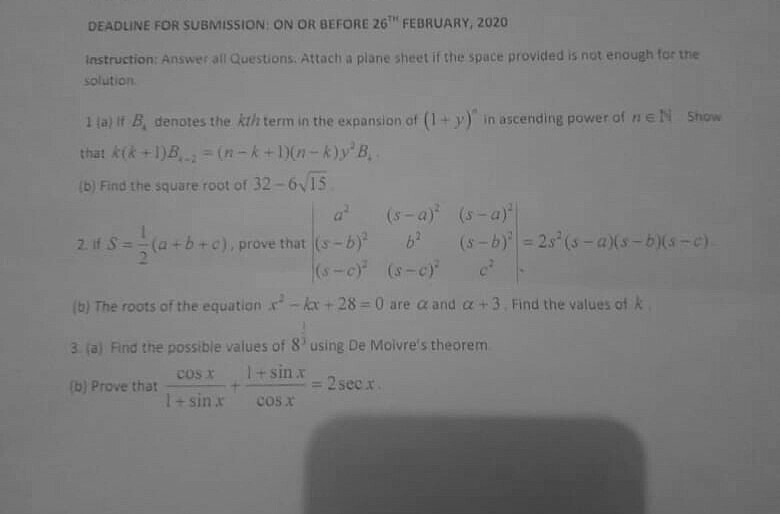
AllQuestion and Answers: Page 1318
Question Number 82685 Answers: 0 Comments: 0
Question Number 82604 Answers: 1 Comments: 0
Question Number 82596 Answers: 0 Comments: 4

Question Number 82593 Answers: 0 Comments: 3

Question Number 82591 Answers: 0 Comments: 12
Question Number 82589 Answers: 0 Comments: 1

Question Number 82583 Answers: 0 Comments: 0

Question Number 82582 Answers: 0 Comments: 2
$${solve} \\ $$$${x}^{\mathrm{3}} −\mathrm{3}{x}+\mathrm{1}=\mathrm{0} \\ $$
Question Number 82579 Answers: 1 Comments: 0
Question Number 82577 Answers: 0 Comments: 3
$$\int\frac{\mathrm{2}−\sqrt{{x}+\mathrm{3}}}{\mathrm{2}+\sqrt{{x}−\mathrm{3}}}\:{dx} \\ $$
Question Number 82574 Answers: 0 Comments: 0

Question Number 82573 Answers: 0 Comments: 4

Question Number 82572 Answers: 0 Comments: 1

Question Number 82571 Answers: 0 Comments: 0

Question Number 82570 Answers: 0 Comments: 1
Question Number 82568 Answers: 1 Comments: 0
Question Number 82566 Answers: 2 Comments: 1
Question Number 82564 Answers: 0 Comments: 0

Question Number 82562 Answers: 0 Comments: 0

Question Number 82561 Answers: 1 Comments: 0
Question Number 82560 Answers: 1 Comments: 0
Question Number 82546 Answers: 1 Comments: 1
Question Number 82541 Answers: 0 Comments: 2
Question Number 82540 Answers: 1 Comments: 0
Question Number 82531 Answers: 1 Comments: 1

Question Number 82528 Answers: 0 Comments: 1

Pg 1313 Pg 1314 Pg 1315 Pg 1316 Pg 1317 Pg 1318 Pg 1319 Pg 1320 Pg 1321 Pg 1322
